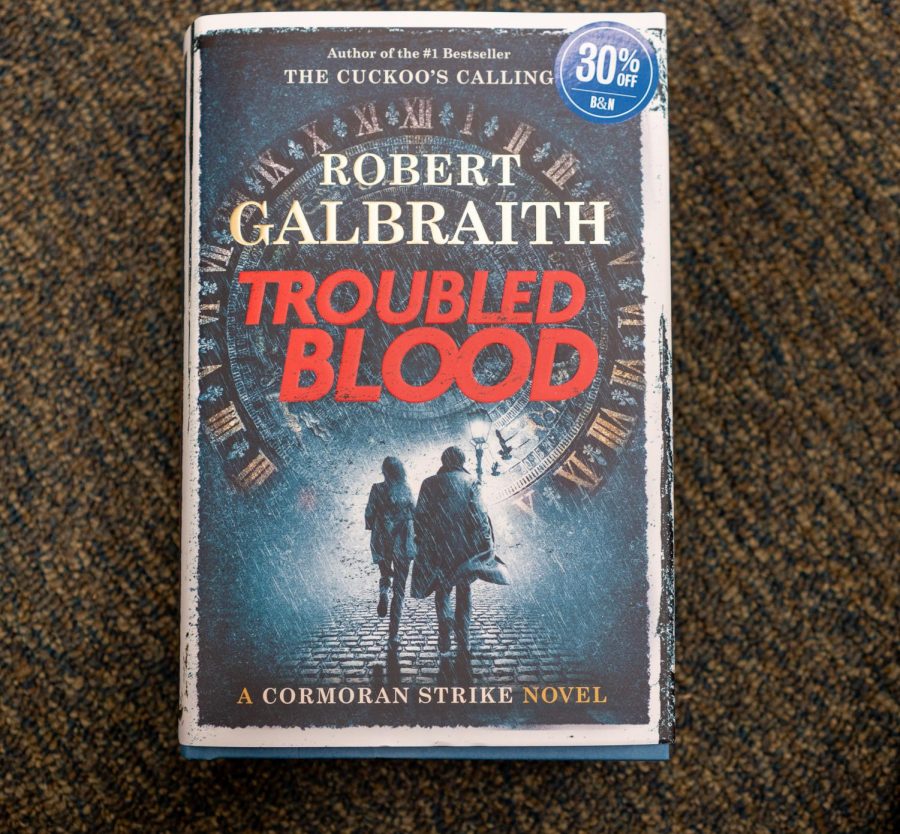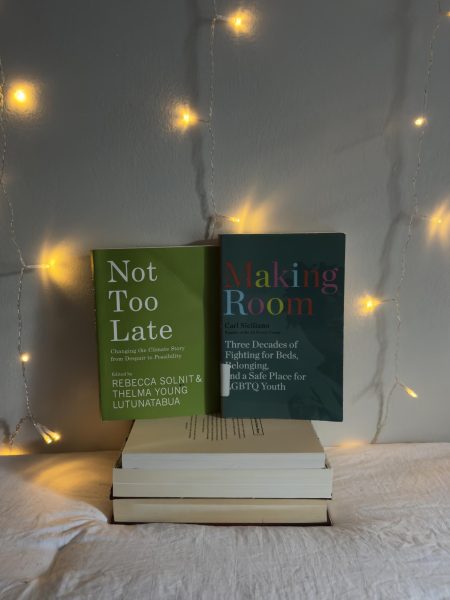J.K. Rowling’s transphobia evident in new book
J.K. Rowling’s new book, “Troubled Blood” was released on Sept. 15 as a part of her new series, “A Cormoran Strike.”
Notable “Harry Potter” author J.K. Rowling is back in the spotlight — and not for the right reasons. While many know her for cultivating the worldwide phenomenon of witches and wizards, Rowling now writes crime stories. On Sept. 15, she faced criticism over the newest addition of her Cormoran Strike series, “Troubled Blood”, for allegations of transphobia. Unfortunately, this isn’t her first offense.
Rowling has made various gender critical statements in the past year, dating back to December 2019. This summer, she buckled down on her anti-trans views by aligning herself with TERF ideology, which stands for trans-exclusionary radical feminism. After a backlash from fans and even the cast of “Harry Potter,” Rowling participated in an open letter with other writers defending free speech and going against so-called cancel culture.
TERFs advocate feminism but they often act as unwanted gatekeepers to feminist spaces and practices by vehemently and grotesquely vilifying trans women. TERFs will argue that they don’t hate trans women; they just don’t believe they are women and do not want them in their spaces. TERFs often perpetuate the narrative that trans women are dangerous men trying to harm real women which is not true, as young trans women of color are more likely to be murdered than their cisgender counterparts.
The real world implication of these views have led to trans/gay panic laws, which is “a legal strategy which asks a jury to find that a victim’s sexual orientation or gender identity… to blame for the defendant’s violent reaction, including murder.” The Bathroom Bill and other anti-trans laws have appeared due to this assumption that trans people are inherently predatory, and aim to take away the rights of citizens simply for being transgender.
”Troubled Blood” follows the plot of a cis male serial killer who happens to dress as a woman to kill women. While some argue that this is simply a plot point that we have seen many times before, it doesn’t take much critical thinking to see that Rowling falsely equates trans women to men. Rowling sees them as dangerous to cis women, and is attempting to persuade her audience into thinking the same.
Queer coding villains is nothing new. We’ve seen it done in Disney movies, comedies, horror films and thrillers. From Norman Bates in “Psycho” to Black Mask in “Birds of Prey”, queer coding has been a constant double-edged sword. While it has been used time and time again as a tool of homophobic and transphobic rhetoric, LGBTQ people have attempted to reclaim certain characters as a means of garnering representation for themselves. But it is not a cisgender’s job to determine what is and isn’t transphobic.
Rowling is doing nothing original. The malicious history behind queer-coding should not be dismissed. By making the serial killer a man that pretends to be a woman, Rowling makes her feelings clear. She doesn’t view him as a man in a dress, but as a stand-in for trans women. She emphasizes the idea that trans women are a looming threat, especially to cis women. That in itself is transphobic.
Even if Rowling is just writing a story, plots like “Troubled Blood” are outdated and overused. There is room for nuance and queer villains and representation from trans and LGBTQ creators.
But not from a transphobe like her.







Newt grinch • Sep 28, 2020 at 6:21 pm
Remember that cancel-culture has no effect on the nazis and far-right extremists, so we need to stop it.
Newt grinch • Sep 28, 2020 at 6:16 pm
While i do not reject your opinion, i would just like to point out, that while Rowling might turn out trans-phobic, she seems genuinly worried that if there is a general rule to let anyone defining themselves as women (cis or trans) to enter spaces designed to women (cis, trans and other), there might be a proportion of willing rapists etc. to pretend to be a transwoman to get close to women for example in public toilets etc. Rowlings’ new book seems to underline this fear. But while she might feel like her heart is in a righr place, this fear is so greatly misplaced and misproportioned that i dont know how to interpret it. Its like she wants to protect women from violent sexoffenders – like we all do – but she has understood the entire concept backwards. For example: if there was a murderer, or a rapist willing to dress like a woman in order to get closer to commit his crimes, that would have nothing to do with transwomen – or transmen, or women, or in fact anyone else exept the criminal himself. I think Rowling has a deep misunderstanding here, and is continuing to defend her stance only because she’s been attacked so much. So maybe she needs to take a chill-pill and we need to stop attacking her, despite her outright wrong opinions. Come on, there are far-right people, and straight-out nazis marching on the street every holliday. Maybe we need to stop arguing who is right and who is just confused on the way to the right path (i have faith that rowling is going find her way to the right place eventually) and start attacking the real enemy: nazis, far-right politicians, would-be-dictators and hateful extremists.